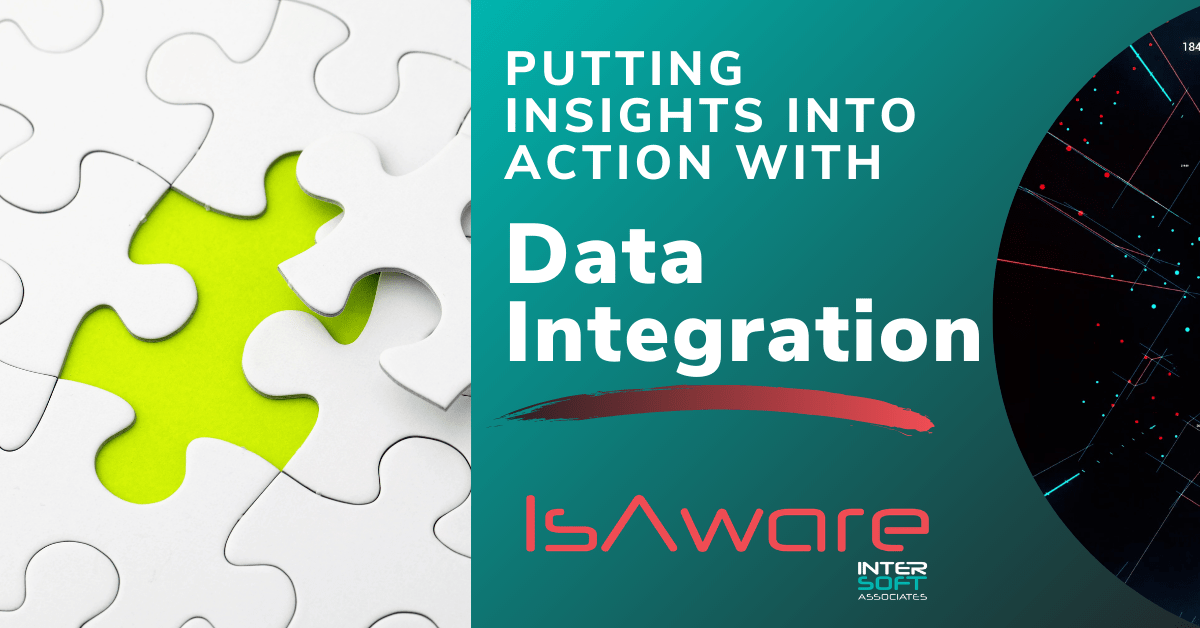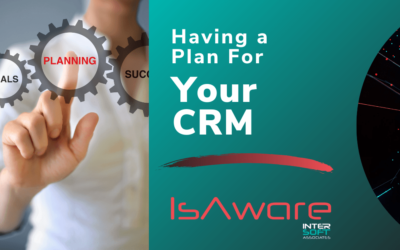Data is information. Information is insight. Data Integration is, simply, how different pieces of disparate or unconnected information are brought together to create deeper layers of insight. Data Integration can help simplify and streamline processes in your business while also creating new ways of thinking about and applying business information and intelligence – with the goal of efficiency and more revenue.
Data Integration helps you consolidate your critical data that may reside within different software systems – sometimes at different locations. Without a proper Data Integration plan and process you won’t have easy access to multiple data sources or systems necessary to deliver valuable insights within your organization.
Keep reading to learn more.
What Is Data Integration?
Data Integration involves combining data from different sources and putting it all in one place so that it is more easily actionable. It makes critical data access easier and more accurate. Integration efforts will help people using almost any process or application in a business.
You can use Data Integration to help with data storage, access, and delivery. A part of data management, consolidation of your data, helps organizations share data between business units or departments. As sharing and accessing data becomes more important, so will Data Integration.
Data Architects create programs to provide a unified view of data from multiple sources. They can automate the process to help connect and provide data from one application to another. For instance, integrating your CRM (Customer Relationship Manager) with your accounting software, like Quickbooks. On their own, each application delivers specific information and capabilities that are useful to your company. When their data is integrated, or combined into a unified view, you can better understand trends in your business, such as the lifetime value of a customer versus the initial acquisition cost, or the profitability of different product lines or even customers.
What About Big Data Integration?
Big Data Integration is important because your organization has to deal with larger and larger amounts of data coming into the enterprise. If the volume, variety, and velocity of your data surpass what regular Data Integration can handle, Big Data Integration becomes so much more important.
Integrating Big Data from different sources requires various data tools with the proper mix of cost and performance for your organization in order to provide you with the right capability at affordable costs. The tools used should also be scalable to effectively manage more and more data as the business evolves.
Big Data Integration is great for combining data from the Internet of Things (IoT), social media, web data, enterprise systems and specific applications written for some of your business units. Information should all go into a single, accessible data warehouse, even if you have a high volume and velocity of data.
Data Integration Tools
When working on your Data Integration capability, you need to consider the right tools for the job. Multiple tools exist for things like data visualization, access, and business intelligence. You should consult an expert in order to optimize your capabilities.
Application-Based Integration
Connecting an individual application, designed for a specific purpose and to achieve a specific function, to another individual application is Application-Based Integration. Rather than connecting to large data stores or Big Data, Application-Based Integration limits integration to the data that resides within the integrated applications. This is an excellent option for a small set of data.
Uniform Data Access
Uniform data access integration, or UDAI, relies on a set of views that you and others use to look at data across your organization. Consolidated data doesn’t require an isolated storage space, and management is limited to similar types of data.
Manual Integration
Manual integration is also known as common user interface. Either way, you’re not provided a unified view of your data. Instead, you will need to access different source systems manually rather than in an automated fashion. This approach can create inconsistencies of results, generate more work for your team, introduce inefficiencies, weaken the integrity of the data and, most importantly, compromise integrity of the results. Data Integration provides your organization with a “single version of the truth”, which is an original source of accurate information. Manual Integration introduces the potential of having multiple sources of the truth. This will greatly impact your ability to make the best data-based decisions possible. It may, in fact, result in catastrophic decisions.
Middleware Data Integration
Middleware enables communication between two or more applications. Think of Middleware as a bridge, or translator. Middleware provides services that, among other advantages, keeps data transfer secure, scales and manages traffic, and configures integrations. Using middleware, Data Integration can be a good option if you need to transfer data to a different layer, where the middleware layer can store integration logic.
Extracts, Transforms, and Loads
Extracts, transforms, and loads take copies of your datasets from different sources. That combined, and sometimes edited or “scrubbed” data can then be loaded into a single data warehouse for proper and actionable analysis.
Common Data Storage
If you want to backup your data, consider using common data storage, which is also called physical data integration. This strategy involves copying data from its source and storing the copy in a different system. It can be helpful if you can keep and access data history – especially for recognizing trends.
Data Integration Techniques
Along with the Data Integration tools described earlier, there are techniques and tools that you can use for optimal data warehousing, combination, and access. Consider a few different techniques available to help with your specific Data Integration plan before you start.
Extract, Load, and Transform
The extract, load, and transform technique loads data as it exists in various systems and locations into a single Big Data system. As you need to access this data, you can then transform the data to use it for the specific analyses that you require.
Data Virtualization
The technique of data virtualization creates a view of data from multiple, disparate systems and combines them, making the data accessible and useful without physically creating a separate data warehouse. Rather than replicating or transferring data, data virtualization leaves the source systems untouched and virtualizes the view of all this disparate data. This gives you a single view of the proper data in realt-time to help you save time when loading the information you require. A physical Data Warehouse can also be used because the virtualized data usually only provides a snapshot rather than a complete history that can be better analyzed.
Data Replication
Replication of data involves copying data from one database to another – typically in different locations. When you do this, you are synchronizing the two databases so that changes apply to both databases simultaneously. Data Replication is especially useful for Disaster Recovery – the ability to recover data that could be lost to physical or digital disaster like hacking, a ransomware attack, or even a fire or theft. You will need to contact a Data Architect to help you determine if this is a solution that you need and the best way to implement it for your organization.
Change Data Capture
Another Data Integration technique is to Change Data Capture. The purpose of this technique is to track data changes as they occur in your databases. When done properly, Change Data Capture maintains necessary information such as who changed a particular field of data, when it was changed, and what were the previous and new values introduced into the data. In a highly transactional database this type of tracking can be invaluable to your organization to understand who did what, when. It can also help in forensic analysis should you require that service.
Streaming Data Integration
Streaming Data Integration lets you integrate ongoing data feeds continuously. A data stream is a sequence of information, called data packets, that are transmitted from one place to another. A stock market ticker or watching a video on the internet is an example of a data stream at work. An important component of streaming Data Integration is to move data into your analytics system so the data can be put in context, studied, and better understood. For instance, activity during a time period for a stock, a sector or the entire market.
Why Does Data Integration Matter?
Data Integration is essential for managing all data, especially Big Data. This is because it gives you a way to access and manage unstructured and disparate data more easily. One major problem with data in different locations is the age-old problem of “multiple versions of the truth” This is a situation that every business must avoid. Properly implemented Data Integration can help in areas such as information delivery, customer analytics, and business intelligence.
Data is an Important Asset
Remember, Data is Information, and Information is Insight. Managing data properly will help you make better business decisions, generatemore sales, create efficiencies, reduce costs and generate more profit – all by helping you understand and respond to what is going on in your business. Data Integration can also help you observe and analyze historical patterns to eliminate waste, reduce costs and to accurately predict future trends, sales and revenue as a result of your analyses and actions..
Data Integration and Application Integration
Data Integration and application integration go hand-in-hand in business. Application integration involves combining multiple applications or systems to achieve a desired function. Data Integration organizes information from multiple sources so you don’t have to track down the data you need and compile or integrate it manually. Together, these two functions mean easier and more accurate access to the information you need and the ability to leverage it in various ways.
Application Integration allows you to combine data from various platforms, allowing the information to be accessed by your teams and your clients through a central user interface.
Integrating Data the Right Way
Though integrating data (and applications) in your business can involve sophisticated analysis of your needs, you can look forward to streamlining processes and reducing unnecessary work and wasted hours. A Database Consultant can help you understand your data and what kinds of integrations can help you solve problems or achieve outcomes. Ultimately, the right Data Integration system will help your organization save time and money. Investigating if Data Integration can help your organization will probably yield a strong benefit in understanding the entire data architecture of your organization.
InterSoft Associates can help you make the most of your data with Data Integration that helps you achieve business goals. Reach out today for an easy conversation and let’s do more with your business insights.






